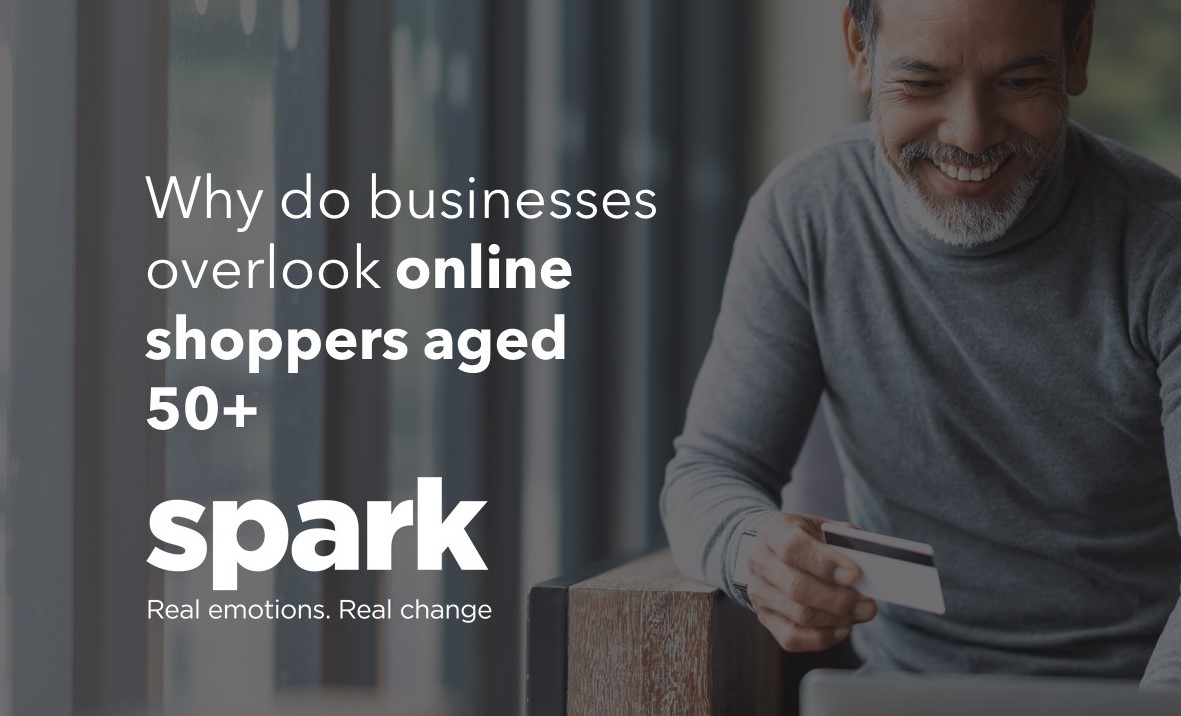Thinking about who an online shopper is, you build the perception of it being someone from a younger generation, but in this article, we explain why this perception is wrong and how you could be missing out by not targetting the over-50s.
To put it in context, only 5% of advertising is positioned towards the over 50s and it generally includes products like walk-in baths and funeral plans (The Mature Marketing Association).
However, there are more than 25 million people over the age of 50, making up approximately 36% of the UK population. In 2019, those aged between 50 and 54 were also the most numerous age group in the UK. Data shows our country, as well as the world, is growing older, with median age expected to reach 44.5 by 2050 in the UK, an increase of 10 years since the 1950s.

The over-50s are big spenders
Over-50s are not only big in number, but they are also big in spending power. Contributing 76% of the UK’s financial wealth, they are also out-spending the younger generations on consumer goods as of 2016 (Age UK). They are house-rich, 68% of them owning their home outright, compared to 12% of under-44s. Over-50s spend the most money on culture and recreation (The Mature Marketing Association) and 62% of them are hoping to spend their savings, leaving an inheritance being seen as optional (This is money).
In an over-50s study run by the insurance firm Sunlife it was found that resigning to a life of day-time TV isn’t on the cards for this group. Around 25% have taken up a new hobby or learned a new skill since turning the big 5-0, 1 in 2 have visited a new country (Marketing Week) and they are not shying away from the internet and associated technologies. Internet usage is almost universal amongst 50 to 64 year olds, the majority own a smartphone and more than half are on social media (This is money).

Over-50s are large contributors to the COVID-19 online shopping boom
It should not come as a surprise then to read that a large proportion of the increase in online shopping seen during COVID-19 can be attributed to the over-50s. Looking at the UK, 1 in 5 shoppers are completely new, with 38% of them being retirees (Kantar); around 25% of Waitrose shoppers are over 55, with the supermarket’s online sales growing by 225% in 2020 (The Grocer), and last, but not least, the typical British online shopper has been Female and between 45-65 years old since March 2020, a shift from the typical online shoppers in Q4 2019, Female and between 25 and 54 years old (EConsultancy).
Businesses have to understand the over-50s online journey
Thinking about the over-50s demographic might bring to mind a number of perceptions which cloud how they really behave. Therefore, really understanding their needs and desires, their likes and dislikes, and the best ways to facilitate their online journeys is extremely important for businesses and brands. The current over-50s are relatively new to the online world, however, the age groups coming in strong are savvier than ever.
To keep up with the demands and expectations of an increasingly larger demographic, businesses and brands might want to look at researching the over-50s at least half as rigorously as they do younger generations, taking novel factors, such as decreasing eyesight, into consideration when exploring ease of use, for example.
At Spark Emotions, we are experts in understanding online shopping behaviour, we’ve helped some of the biggest brands in the world understand online shoppers to grow sales.
Get in touch by clicking here to find out how we can help you grow your online business.

Written by Amelia Gavrila, Senior Research Executive at Spark Emotions.
If you have any questions, feel free to reach out to Amelia via email amelia.gavrila@sparkemotions.com or connect with her on LinkedIn





